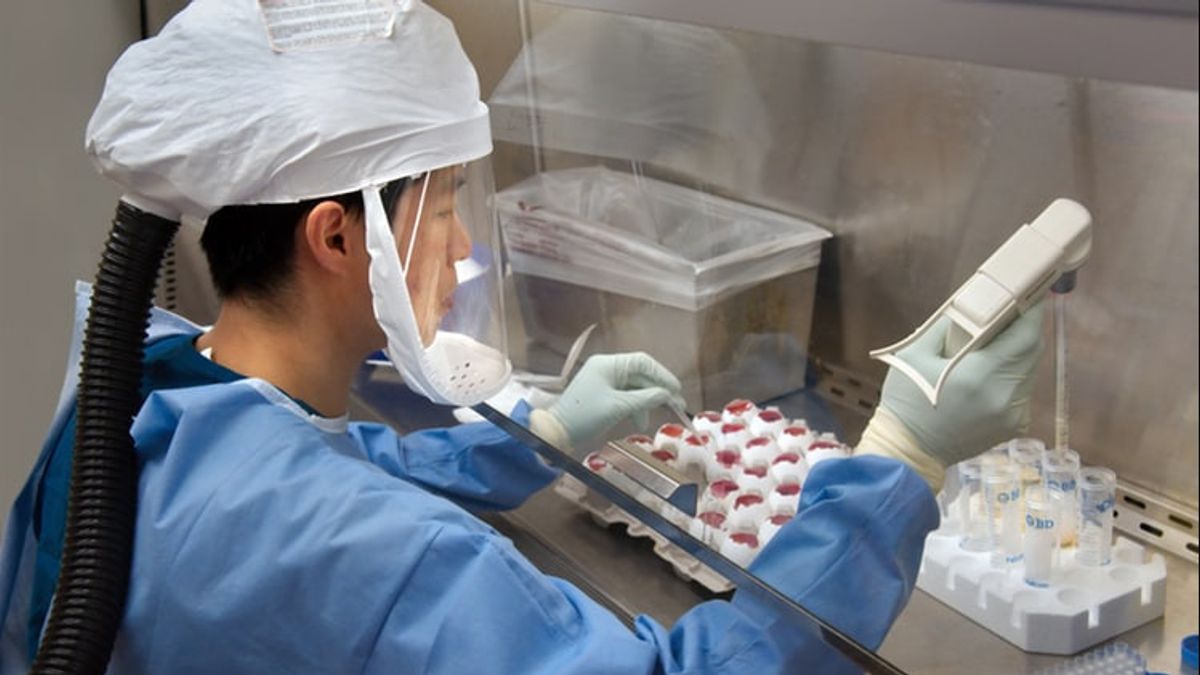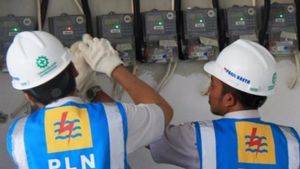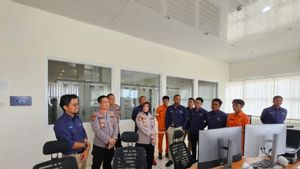JAKARTA - Good news comes from China. That said, they will start testing the corona virus vaccine or COVID-19. China is confident and says their vaccine is ready for mass production. Apart from China, America and Israel also participated in the competition. Then, how close are we to the COVID-19 vaccine?
Before knowing how far the development of the COVID-19 vaccine is, it helps to understand how the vaccine works. As explained in the United States Agency for Disease Control (CDC) document, basically, when pathogens that cause disease - such as bacteria and viruses - invade the body, they will attack the immune system or the immune system.
Not only that. Pathogens will also multiply. The invasion process is called infection and causes disease. In the human body, the immune system works to fight infection with several "tools". Among these are white blood cells or immune cells. Immune cells consist of macrophages, B lymphocytes, and T lymphocytes.
Each part of the immune cell works in a different role. The macrophage, for example, has the function of ingesting and digesting pathogens as well as dead cells. The macrophage then leaves part of the body's invading pathogens called antigens. In the work of the immune system, the body will identify the antigen as a threat, which then triggers the stimulation of antibodies that function to attack the threat.
Next, is the job of B lymphocytes. In simple terms, B lymphocytes are protectors of white blood cells. B lymphocytes work by producing antibodies that can destroy the antigens left by the macrophages. Others, T lymphocytes.
Basically, the work of T lymphocytes is similar to B lymphocytes. The difference is, T lymphocytes have a special task to attack cells in the body that have been infected. In the process of infection, it takes the body several days to exert all of the above tools to fight against pathogens.
What's interesting about the work of the immune system, after the infection is cured, the immune system will remember or record how the body fights pathogens, whether in the form of bacteria, germs or viruses. That is why usually a body that has been infected with one type of pathogen will have immunity to the same type of pathogen.
The recording is done by the body by storing parts of the T lymphocytes, which are also called memory cells. It will react quickly when the body encounters similar pathogens. Furthermore, the identical antigen that disturbs a person's body will be immediately responded to by the B lymphocytes by creating antibodies to attack the antigen.

Vaccine
In fighting pathogens, the body works wonderfully. Then, how do vaccines function? Vaccines help develop the immune system by "fake" or imitating an infection. Vaccine-induced infections, however, should not cause people to catch disease.
Vaccine action only triggers the immune system to produce T lymphocytes or memory cells. So, if there is an original germ or virus in the future, the immune system is ready to release antibodies to fight. In principle, vaccines work by creating a fight between pathogens and the immune system. Typically, vaccines are administered at low doses, because the goal is to trigger the immune system to produce antibodies against certain pathogens, as described above.
Regarding COVID-19, currently several countries are competing to make vaccines to fight the mutated corona virus or the new corona (nCov or Cov-2) which causes a disease called COVID-19. These countries include China, Israel and America.
In China, biowarfare scientists from the Wuhan Academy of Military Medical Sciences have secured permission from the authorities, the National Products Administration on Tuesday, March 17, to test a potential vaccine formula for COVID-19. "We are a community to share humanity's future. And vaccines are one of the most powerful scientific and technological weapons to end the coronavirus epidemic," said Chen Wei, a military biowarfare expert who led the research team. .
Chinese military biowarfare researchers started the research since January 26. In less than two months, Chen finally said, he and his team were ready to produce a large-scale vaccine, provided that the trials were successful. "In accordance with international standards and domestic laws and regulations, we have made preliminary preparations for safety, effectiveness, quality control and mass production," said Chen.
Apart from China, good news also came from Israel. Researchers from the Israel Biological Research Institute, as reported by haaretz.com, are said to be ready to announce that they have finished developing a vaccine for COVID-19. Unfortunately, the process is not final. The development process still requires a series of tests and experiments that can take months, until the vaccine is confirmed to be effective and safe to use.
Israeli Defense Minister Naftali Bennet is even realistic about the vaccine-making efforts that Israeli Prime Minister Benjamin Netanyahu instructed on February 1. Nevertheless, optimism is still being built. "There has been no breakthrough in the efforts of biological institutions to find a vaccine for the corona virus ... Today, more than 50 experienced scientists are still working in biological institutions to research and develop medical drugs for the virus," said Bennet.
The stage of creating a vaccine
In a document, the US disease control authority, the CDC describes the steps that must be passed before a vaccine is ready for mass production. There are six stages. First, the exploration stage, followed by the pre-clinical stage, then clinical trials, processing regulatory approval, manufacturing preparation, and finally quality control.
Research in Israel itself is still entering the preclinical stage. Researchers are said to be soon testing potential vaccine formulations in animals. After passing preclinics, researchers can progress to clinical trials. At this stage, trials are carried out on humans. Researchers will usually really examine the side effects and differences in the characteristics of each population affected by the virus.
This means that China has just entered the clinical trial stage, namely testing it directly on humans and researching how it impacts. Still quite far from mass production. What really surprised him was the US move.
Uncle Sam's country is reported to have already tested vaccines on humans. As reported by the BBC, the authorities have even found four people who volunteered as vaccine guinea pigs whose testing will be carried out at the Kaiser Permanente facility in Seattle, Washington, USA.

Meanwhile, at Kaiser Permanente, the first person to receive the vaccine is a 43-year-old mother of two from Seattle, Jennifer Halle. "This is a wonderful opportunity for me to do something," said Halle.
Experts say, from that process, it will still take months. This is natural. Because at the clinical trial stage, it still has to go through three stages, according to the President of the Sabin Vaccine Institute, Bruce Gellin. As proclaimed by The Guardian, the first phase involved dozens of volunteers who were healthy and ready to be tested and monitored for safety aspects and side effects.
Then, the second is to involve hundreds of people to see how effective the vaccine is. Third, do the same thing with thousands of people. "Not every horse that leaves the starting gate will finish the race," said Bruce Gellin, implying the risk of making a vaccine.
The English, Chinese, Japanese, Arabic, and French versions are automatically generated by the AI. So there may still be inaccuracies in translating, please always see Indonesian as our main language. (system supported by DigitalSiber.id)













